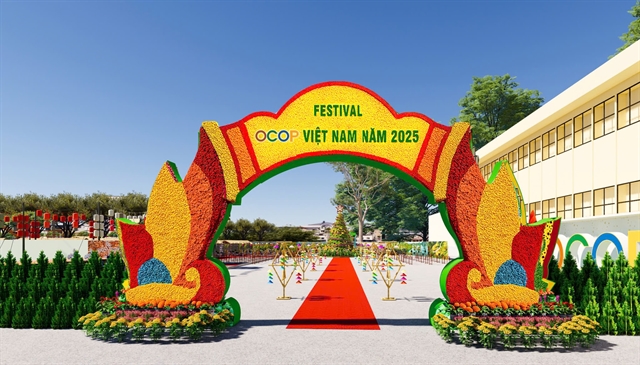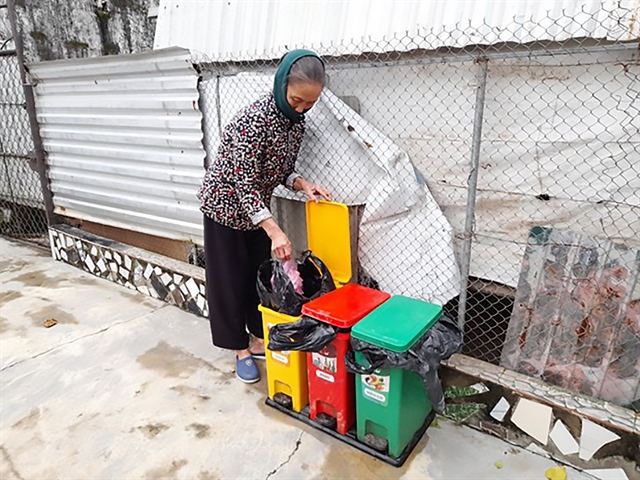 Society
Society

 |
| A woman sorts out waste in Kim Liêm Commune, Nam Đàn District, in the central province of Nghệ An.— Photo vietnamplus.vn |
NGHỆ AN — Sorting out household waste is second nature to Lê Thị Hồng.
The resident of Liên Hồng Village in Kim Liêm Commune, Nghệ An Province, takes her family’s organic waste and turns it into fertiliser for her plants.
Hồng said the habit was formed after the district deployed a model of turning organic waste into a clean fertiliser to reduce environmental pollution and costs in agricultural production.
She said before the model was deployed, she put all waste including food waste, plastic bags and bottles into a large nylon bag and threw it away.
However, since they were given three-compartment trash cans, she and her family members have followed instructions to classify waste.
The waste is divided into three types; food, recyclable and reusable, and other waste.
She said food waste accounts for the largest amount. Her trash was often full within two or three days when she did not sort out waste.
But now, it takes about 10 days to fill the trash, she said. Because all food waste is used to be clean fertiliser, she said.
Vegetables and guava trees in her garden now grow very well, she said.
Nguyễn Văn Thiện, another resident of the village, said since the day he was given the three-compartment trash, the waste was clearly sorted out, saving time and effort for trash collectors.
In the past, we often threw all kinds of garbage in one nylon bag, causing inconveniences for trash collectors, he added.
Nguyễn Văn Hùng, a resident living Sen 2 Village, said thanks to organic fertilisers composted from food waste, his family harvested 300 kg of zucchini late last year. Other vegetables like cabbage and beans, are always fresh thanks to the organic fertilisers.
Nguyễn Thị Thủy, another resident of the village said when the model has been applied, all food waste of her family has been put into a compost bin and a specialised composting machine to make organic fertilisers for ornamental plants in her 700-sq.m garden, especially for orchids of all kinds with the number of up to hundreds of roots.
Thuỷ said the classification of waste and the use of food waste as clean fertiliser are very helpful and practical.
It not only reduces pollution for the environment but also brings benefits for the households and the whole society, she said.
Nguyễn Thành Lâm, head of the district’s Natural Resources and Environment Office said that while the district lacks landfills and does not have a waste treatment plant (currently, waste in the district is transferred to the city's landfill for treatment), the classification of domestic solid waste at source not only contributes to reducing the amount of waste that must be collected, transported and treated, but also creates a source of clean fertiliser for plants.
Vũ Ngọc Tĩnh, director of Centre for Technology and Data for Environmental Pollution Control under the Ministry of Natural Resources and Environment, said that after a period of applying the model, environmental protection and classification of domestic solid waste at source in the commune have shown many positive changes.
Currently, the separation of domestic solid waste at source has significantly made a reduction of domestic solid waste to be treated in the locality, he said.
The practice of sorting waste at source has contributed to bringing a new look to the commune, village roads have become green, clean and more beautiful, he said.
The model will be deployed to many other localities across the country in the future. — VNS




